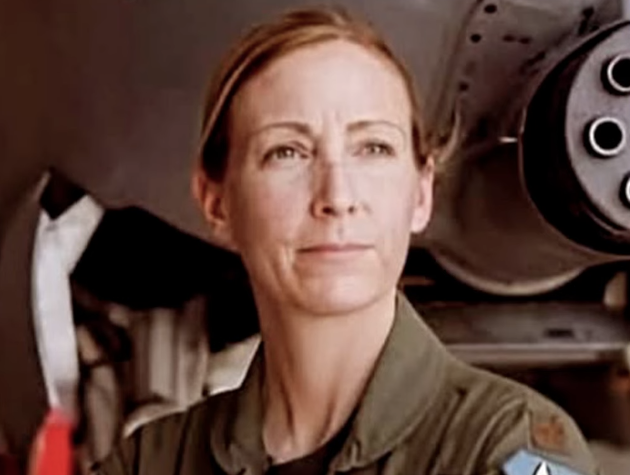
The sky over Baghdad burned with smoke. It was 2003, and the city was alive with anti-aircraft fire. Captain Kim “KC” Campbell, an A-10 Thunderbolt pilot with the U.S. Air Force, was flying low, supporting troops on the ground. She had done it dozens of times before—but this time, something went wrong.
Her aircraft shuddered violently. Warning lights flashed across the control panel. Both hydraulic systems failed. The jet lurched, spinning out of control. Every second mattered.
Ejection was the logical choice. Any other pilot might have pulled the lever. But Kim Campbell didn’t. She refused to leave her wingman behind, refused to abandon her mission.
Instead, she reached for something almost no one had ever used in combat: manual reversion—a backup control system that relies on pure muscle strength, not hydraulics.
As the jet plunged toward the city, she fought the stick with all her strength. The controls were heavy—stiff as concrete—but slowly, the aircraft began to respond. She managed to level it, though one engine was dying and the wings were shredded.
For over an hour, Campbell flew like that—limping through enemy airspace, with no steering, no brakes, and a cockpit full of alarms. Her focus narrowed to one thing: get home.
Back at base, her team listened in disbelief as she radioed in. “I’m bringing it back,” she said calmly.
When her jet finally appeared over the horizon, ground crews ran to the runway. The plane looked like it had been through a war—and it had. Hundreds of holes peppered its frame. Hydraulic fluid leaked down its fuselage. The tail had nearly been severed. Yet it was still flying.
When the A-10 touched down, the base erupted in cheers. Her commanding officer later said he could hardly believe anyone could control a plane in that condition. Campbell climbed out of the cockpit—covered in sweat, her arms shaking from the effort—and smiled faintly.
Her words were simple: “I just did my job.”
That day, she earned the Distinguished Flying Cross—one of the highest honors for bravery in the air.
Years later, when asked how she stayed calm, she said it wasn’t calmness—it was focus. “When fear comes, training takes over. You don’t think about dying. You think about flying.”
Campbell would go on to serve as an instructor and later as a senior Air Force leader, mentoring younger pilots—especially women—on what it means to face fear head-on. She often reminds them: Courage isn’t about being fearless. It’s about flying through fear anyway.
Her A-10 was nearly destroyed that day, but her willpower never wavered.
Some aircraft are built to withstand fire.
But the strongest ones are built from the people who fly them.
💫 If this story inspired you, share it. Because real heroes don’t always walk away unscathed—they just never stop coming home.